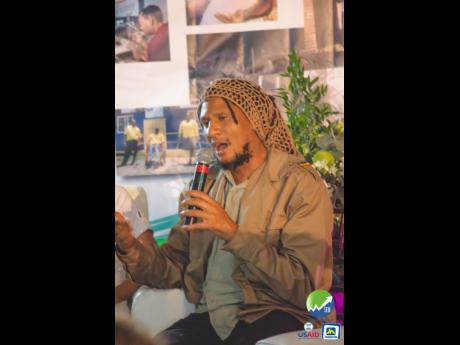Growth & Jobs | Put land under production to create wealth – Dr Kadamawe K’nife
DR KADAMAWE K’NIFE is a lecturer/researcher in the Mona School of Business at The University of the West Indies Mona campus. He is also the director of the Centre for Entrepreneurship Thinking and Practice, and a strong believer in wealth creation.
When speaking on the panel of ‘Land as an Economic Resource’ on Friday, June 21 during the 16th Annual International Charles Town Maroon Conference and Festival at Charles Town in Portland, his passion for entrepreneurship was made clear even though he did not utter the word once.
Staying close to the conference theme of ‘The Land: Ancestral Connections, Indigenous Rights, Stewardship’, Dr K’nife made it clear that the land and the water which flows through it are the basis of wealth creation. “Which is the main and probably the only source of real wealth,” he declared online from “another country”. And, as such, land and economics are married to each other.
And, as he implied, it is real land, not the sort that is made in Dubai and which underwent a flooding disaster earlier this year. “You don’t get rich and generate wealth for your country by creating some hypothetical thing,” he argued.
This is in light of the impact of global warming on coastal areas, which are at risk of disappearing under the sea. Maroon lands, which are invariably mountainous, are thus of greater value, and more secure, and the Maroons must recognise this.
People will be migrating to settle on secure land, not only for the land itself but also for the water on it. It seems then, that in a few decades, wars will be fought over land occupation and possession. And how prepared are the Maroons to protect their lands on which there is an abundance of water sources?
“Additionally, you’ll find that the majority of wars in the world are not being fought over oil, which is something that can be replaced, but over water. And we know our lands in the mountains are the sources of water … the real source of wealth, not just now, but in the future, is going to be water,” Dr K’nife stated.
This is very essential; because, livelihoods are going to be inextricably link to land with water. The questions then are: How do the Maroons meaningfully transform their sources that they have into a foundation for wealth creation? Sovereignty and security of Maroon lands are very important to the Maroons, but how do they leverage what they already have?
Thus, they need to develop a serious strategy around food health and wealth, and capitalise on what they have – the land. For instance, he said, there is no Maroon community in which there is a thriving ganga business. The access to the land is already there, but for economic opportunities to be established, there has to be proper planning, long-term strategic planning.
Dr K’nife also bemoaned the lack of productivity across the board in Jamaica, and the importation of unhealthy foods that are linked to lifestyle diseases and deaths. People should then have access to healthy soil in which food, chock-full of vital nutrients, are grown.
The mountains then, where the environment is healthier, are where people should go to find resources. “We need to learn from our ancestors,” he quipped. It is not only about food plants; there is also the need for the production of lumber and natural fibres, such as hemp.
He said he had seen a high level of poverty in rural areas where there is access to land. And there are single-mother households scattered in communities with no access to farmland. These communities are not wealthy communities, Dr K’nife argued. And it doesn’t make sense that those who have access to land and water are not using them in any meaningful way. It is about “farming food” and not about “forming fool”, Dr K’nife remarked.
Dr K’nife lectures in the area of entrepreneurship and strategic planning. His research focus is on social entrepreneurship and the application of dynamic strategic planning techniques in planning, policy and project development. He applies these techniques at the international, regional and national levels.


